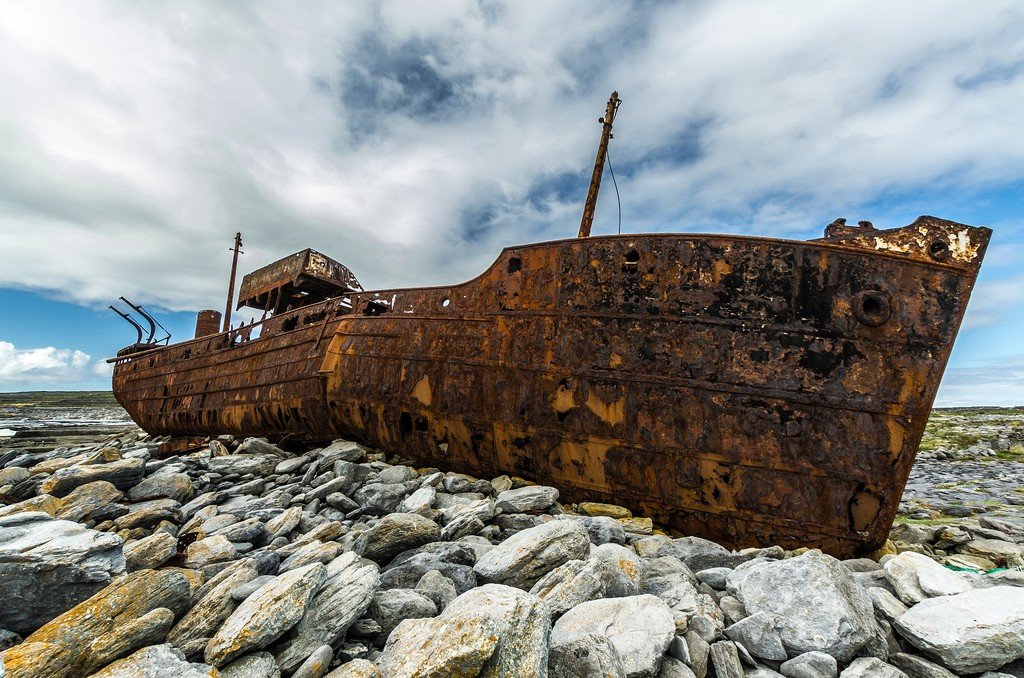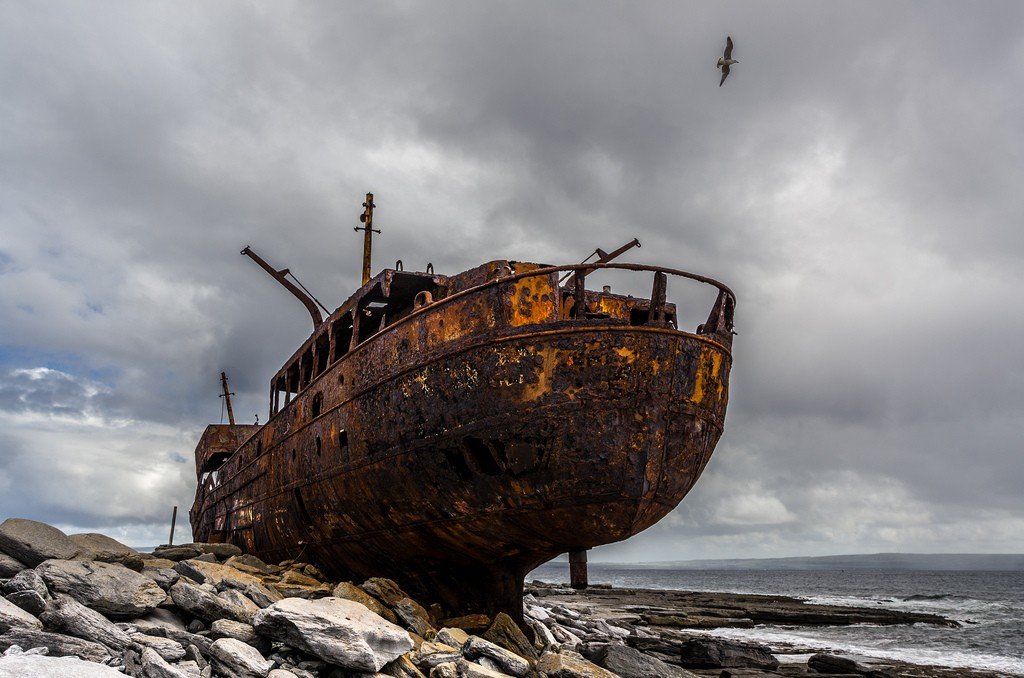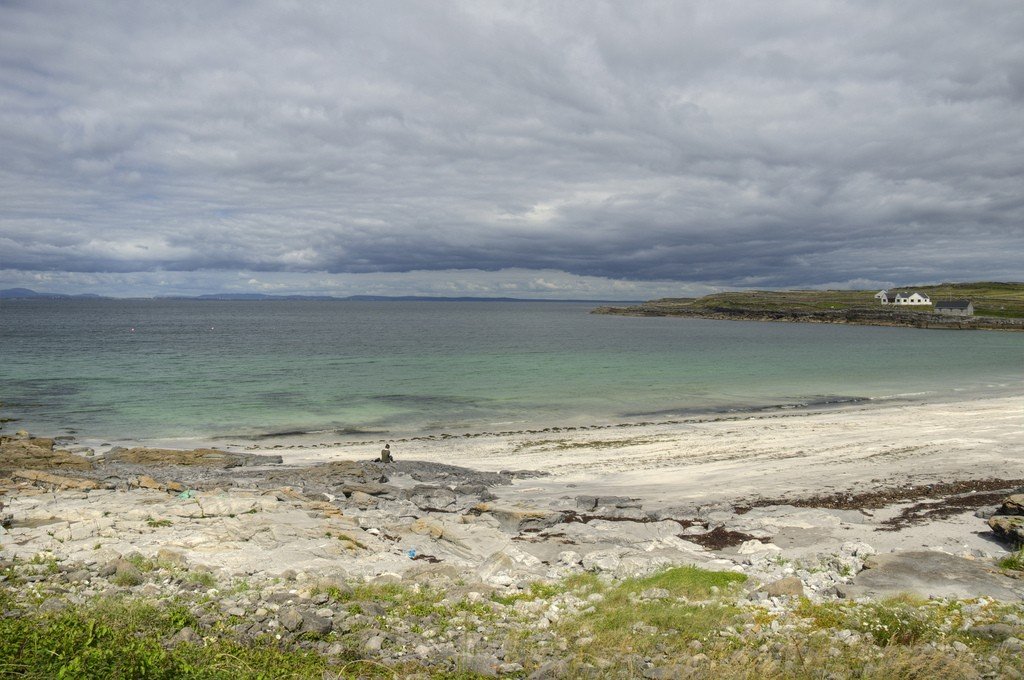Aran Islands
Aran Islands is a miniature archipelago located on the border of Galway Bay and the Atlantic Ocean, near the western tip of Ireland. The Aran Islands belong to County Galway in the province of Connacht. These places are famous for their ancient stone structures and sheer cliffs, as if they came from the pages of Celtic fairy tales. The archipelago consists of 3 islands with a total area of only 51 km². The largest of these is Inishmore (13 km long and 3 km wide), the smaller ones are Inishman and Inishire.










Video: Aran Islands
Aran Islands Attractions
The magnificent landscapes of the archipelago are rightly considered among the most beautiful in the world. The foundation of the Aran Islands is a rocky limestone ridge. When broken down, this rock forms fairly flat slabs, which, combined with sea waves and scanty vegetation, form a charming relief.
The Aran Islands have many buildings of so-called dry masonry. The hedges between plots, forts and pagan sanctuaries are made of stones that have been held together for hundreds and sometimes thousands of years by the force of their weight alone. Several ancient structures built around the 2nd century BC can be viewed on Inishmore
.The most popular with tourists is the Angus Fort. It comes right up to the edge of a hundred-meter sheer cliff, so from here you can enjoy mesmerizing sea views. Presumably, this architectural complex was used for Druidic rituals. The restored fort has walls up to 4 meters thick and 6 meters high. Inside the concentric labyrinth, there are staircases and rooms that can be navigated independently.
.There are two other forts in the interior of the island, Dun Eoghanachta and Dun Eochla, but they are less popular. On Inishmore, the town of Killeani is home to the world’s smallest church, St. Brendan’s Church. On the same island you can also see an ancient stone hut built in the shape of a beehive. It is round on the outside and square on the inside.
.On Inishire, the main attraction is O’Brian’s Castle, built in the fourteenth century. Also from the Aran Islands you can travel to the Cliffs of Moher, famous for its diverse wildlife. There are observation decks and an Atlantic Ocean museum.
.Aran sweaters
The local woolen sweaters are considered a major element of cultural heritage. They were once known far beyond Ireland’s borders – it’s not for nothing that needlewomen around the world refer to knitted braids as aran sweaters. They are classic monochrome pieces richly decorated with embossed patterns. In the past, sweaters were created only by hand, but most of the goods in modern shops are made with the help of machine knitting. The changing method of production has not changed the traditional patterns, exceptional durability and softness of woolen clothing.
.Originally, women knitted sweaters for their sailor husbands. Each family had its own patterns for decorating the garments. There is an opinion that the peculiarities of the decoration helped in identifying drowned fishermen. You can buy a warm sweater at one of the shops in the archipelago, and learn about the history of Aran knitting at the Aran Sweater Market & Museum in Kilronan.
.How to see the Aran Islands
Given the small size of the archipelago, it’s possible to get away on foot. On Inishmore it is easy to rent a bicycle at the price of 10 euros per day, but it is not possible to bring a car on the ferry. Among lovers of comfort are popular tours by minibus, which are especially relevant when the weather does not spoil the sunny warmth.
.There is a ferry between the Aran Islands from April to October, so getting from Inishmore to Inishmaan or Inishire is easy. At other times, you’ll have to return to Rossaville to get to other parts of the archipelago. Locals sometimes use a kurrach, a traditional paddleboat with a wooden frame covered in animal skin, to get around.
.Tourists
You’ll only find a hotel on Inishmore, so a visit to the rest of the Aran Islands shouldn’t be delayed, or you’ll need to bring a tent. In the humid temperate maritime climate it often rains, so it is advisable to bring a raincoat. When choosing clothes, you should take into account the average temperatures of the summer and winter months: +7 °C in January, +16 °C in July.
.Currency exchange is available on all islands, but only on Inishmore there is an ATM (located in the supermarket). The locals communicate among themselves in Gaelic, but will have no problem maintaining a conversation with a tourist in English. The people here are quite friendly: you are sure to tell you the way, with interest ask about the trip, with pleasure tell about life on the island.
.
The most budget option on Inishmore will be shopping at the Spar supermarket. Most of the island’s cafes and restaurants are located in the town of Kilronan. O’Malley’s at Bayview and Tigh Nan Phaidi are considered the best establishments. The best places to eat on Inishmaan are the hotel cafes. Teach an Tae tea house and Fisherman’s Cottage Cafe, a home-cooked restaurant, are popular on Inishire.
.When planning your trip, you can visit the official website of the Aran Islands.
How to get there
One of the easiest options to get to Inishmore is the ferry, which leaves from the port of Rossaville village. There are also sea connections between the archipelago and Doolin. Local tour companies organize cruises to the Aran Islands and the Cliffs of Moher.
.Another popular option is by airplane. Flights depart from Connemara’s Invaran Airport. Planes arrive at each of the Aran Islands 5 times a day. At the same time, the journey will take only 7 minutes. A ticket costs about 50 euros, but if traveling as a family or a company, you can request a better group rate. The planes are small, to the point that a tourist can be assigned a seat next to the pilot, making the flight an extra mini adventure.
.